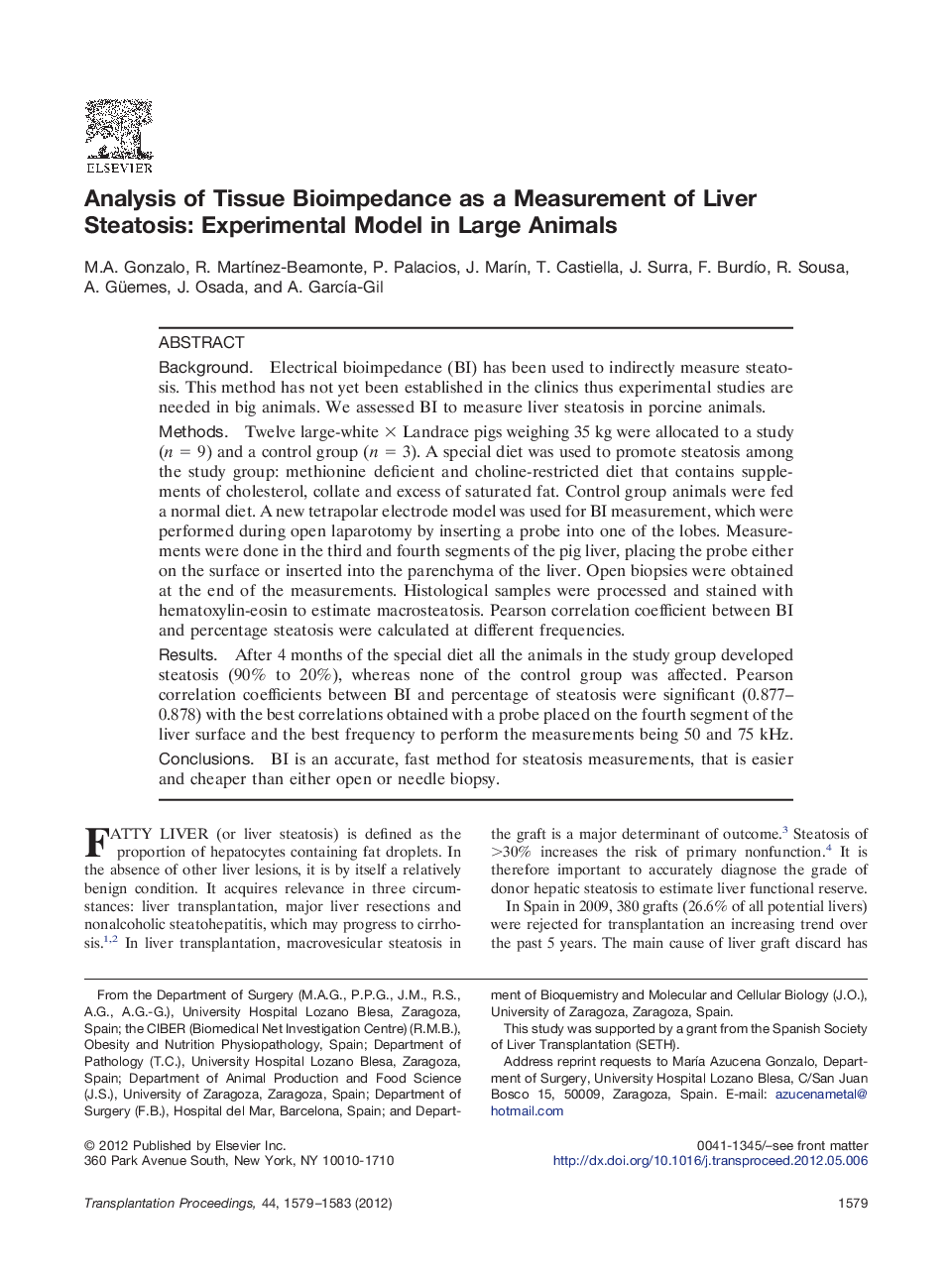| Article ID | Journal | Published Year | Pages | File Type |
|---|---|---|---|---|
| 4259912 | Transplantation Proceedings | 2012 | 5 Pages |
BackgroundElectrical bioimpedance (BI) has been used to indirectly measure steatosis. This method has not yet been established in the clinics thus experimental studies are needed in big animals. We assessed BI to measure liver steatosis in porcine animals.MethodsTwelve large-white × Landrace pigs weighing 35 kg were allocated to a study (n = 9) and a control group (n = 3). A special diet was used to promote steatosis among the study group: methionine deficient and choline-restricted diet that contains supplements of cholesterol, collate and excess of saturated fat. Control group animals were fed a normal diet. A new tetrapolar electrode model was used for BI measurement, which were performed during open laparotomy by inserting a probe into one of the lobes. Measurements were done in the third and fourth segments of the pig liver, placing the probe either on the surface or inserted into the parenchyma of the liver. Open biopsies were obtained at the end of the measurements. Histological samples were processed and stained with hematoxylin-eosin to estimate macrosteatosis. Pearson correlation coefficient between BI and percentage steatosis were calculated at different frequencies.ResultsAfter 4 months of the special diet all the animals in the study group developed steatosis (90% to 20%), whereas none of the control group was affected. Pearson correlation coefficients between BI and percentage of steatosis were significant (0.877–0.878) with the best correlations obtained with a probe placed on the fourth segment of the liver surface and the best frequency to perform the measurements being 50 and 75 kHz.ConclusionsBI is an accurate, fast method for steatosis measurements, that is easier and cheaper than either open or needle biopsy.
